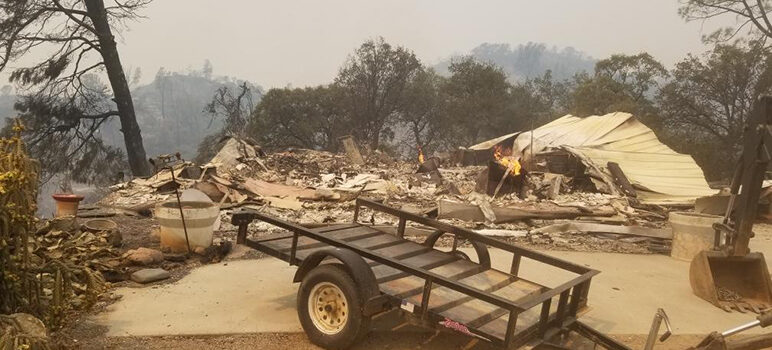California’s storm-sparked lightning fires have demolished more than 1,200 buildings, consumed more than 1.4 million acres and claimed at least seven lives.
In a recent briefing, Gov. Gavin Newsom assured residents that “we’ve deployed every resource at our disposal” as the number of fires burning statewide grew to 625.
Though firefighters gained more control over some of the blazes that have blanketed Northern California in smoke, they still expect a weeks-long battle ahead.
To the east of the Santa Clara Valley, the SCU Lightning Complex has once more surpassed the North Bay fires to become the largest in the state—and the second largest in the past century. As of today, it spans nearly 365,000 acres from the Tri-Valley and South Bay in the west to the Central Valley in the east.
Cal Fire managed to push containment from 10 to 15 percent. But fresh fuel and rugged terrain continue to pose problems for understaffed fire crews while evacuation orders remain in effect for the South Valley around Morgan Hill.
“Short range spotting continues to be an issue due to dense brush fields with no burn history,” Cal Fire wrote in today’s briefing on the fire complex. “Access into remote areas is lengthy and hampered by trees [and] branches continuing to fall blocking the roadways. Slope reversal in the deep drainages continues to extend the fire perimeter.”
Spotting in uncontrolled areas has fueled the fire’s steady expansion, officials said.
“Outflow winds over the past 24 hours have caused multiple sections of line to become active,” Cal Fire reported at 7 this morning. “Top priorities continue to be civilian and fire fighter safety and the protection of numerous structures and critical infrastructure threats with the allotted resources.”
The trio of lightning fires comprising the SCU Complex have damaged six buildings, destroyed 18 more and hurt five people.
Nearly 1,400 personnel are assigned to battle the fire, which has chewed through a mostly uninhabited expanse between Mt. Hamilton and I-5.
Meanwhile, the CZU Complex has grown to nearly 80,000 acres across Santa Cruz and San Mateo counties with 17 percent containment.
“Firefighters worked aggressively through the day taking advantage of the favorable weather,” according to Cal Fire’s morning update. “The fire is burning in southern San Mateo County and northern Santa Cruz County. The fires continue to actively burn above the marine layer in the heavy timber and thick undergrowth.”
More than 70,000 people have been evacuated from the CZU zone, although many stayed behind to fight the fires and try to save their mountain homes.
A fire weather watch remains in effect for the CZU zone and the potential for new fires prompted officials to expand evacuation orders into Santa Clara County by Los Gatos.
The CZU blazes have claimed one life, damaged 32 structures and destroyed 330 others.
In the North Bay, the LNU Lightning Complex has surpassed 352,000 acres with 27 percent now under control. But the damage is extensive.
Five people have died in the wine country blazes and several more sustained injuries. More than 250 buildings have been damaged and nearly 1,000 destroyed.
Though some evacuation orders have been lifted, state officials see no end in sight for the unusually early, intense fire season that marks the beginning of what Cal Fire Battalion Chief Jake Hess called a new era of “megafires.”
“This is an absolute marathon that we are embarking on,” he told reporters at a briefing earlier this week. “We have recognized that we are going to need to be here in the long term. We have been messaging to all our cooperators that we are going to have to manage the pace because this is going to be a long term incident.”


Jen you need to look into this.
http://imgur.com/a0IosLQ